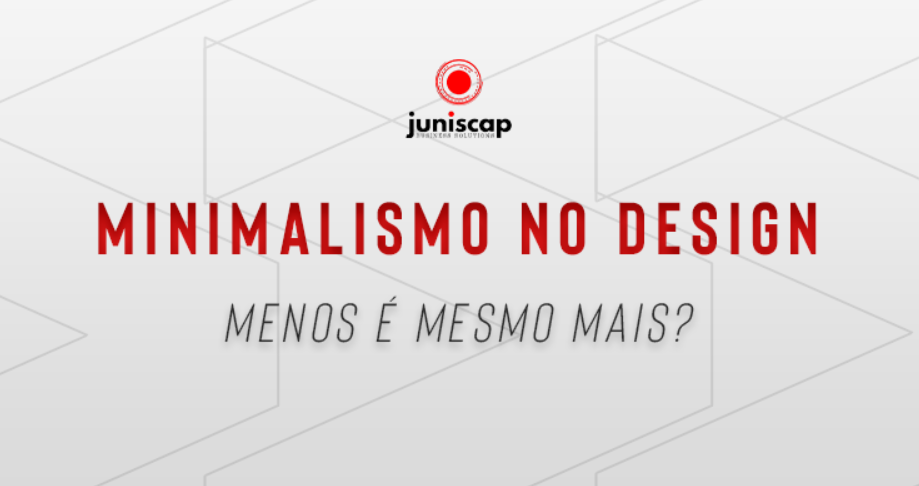O minimalismo no design tem marcado cada vez mais a sua posição em todos os aspetos do nosso quotidiano, mas estaremos a dirigir-nos para uma arte sem identidade própria?
As trends são cíclicas. O que há um ano era visto como ultrapassado, hoje é avant garde. Esta efemeridade de movimentos resulta numa maior rapidez de adaptação, levando as marcas a implementar mudanças drásticas numa tentativa de acompanhar o ambiente extremamente dinâmico onde se inserem.
É nesta envolvente que o minimalismo no design encontra terreno fértil para prosperar. A facilidade de interpretação dos elementos, a estética clean e o potencial em marketing e vendas, assumem-se como pontos a favor para um rebranding rápido e teoricamente eficiente.
Mas de onde surge o minimalismo no design que toda a gente fala?
Várias são as raízes que servem como alicerces para o minimalismo no design que conhecemos hoje, daí a importância da sua desmistificação.
- De Stijl: No início do século XX, entre 1917 e 1930, na Holanda surge esta corrente artística, caracterizada pelas linhas abstratas, formas geométricas, cores primárias e simplicidade de elementos. Assim, De Stijl é um movimento artístico que encontra a beleza na sua subtileza.
- Design Tradicional Japonês: Numa cultura onde a simplicidade de rotinas é a norma é, portanto, natural que a mesma se reflita no design. O foco nas linhas simples, cores harmoniosas e subtis resultam em obras elegantes sem excesso de elementos que as prejudiquem.
Com estas raízes bem definidas, o minimalismo atual é resumido em alguns pontos-chave: seleção de elementos que apresentem uma função bem definida na composição final; a aposta no detalhe que reforce a experiência do consumidor; escolha estratégica de cores sensoriais; gestão do espaço em branco; tipografias simples e altamente legíveis e utilização do contraste para criar interesse visual.
Marcas como a Netflix, Uber e Burger King (com o seu novo rebranding) conseguiram na simplicidade da sua imagem, criar uma identidade memorável, reconhecível e facilmente associável ao seu ramo de atividade, o que claramente suportou a sua franca expansão de notoriedade atual.
Por outro lado, mesmo que com as marcas acima referidas o uso do minimalismo no design tenha funcionado como um trunfo de afirmação, existem também recentes rebrandings onde o potencial de mercado se sobrepôs à pegada histórica e tradicional associada à identidade das mesmas. Estamos a falar de marcas haute couture como Balmain, Yves Saint Laurent e Balenciaga, onde a minimalização da sua identidade gráfica caiu numa imagem simplista, sem alma e carente de qualquer elemento diferenciador, resultando numa série de logótipos semelhantes e indistinguíveis ao olhar exigente do consumidor.
O minimalismo no design, tal como qualquer outro movimento artístico, deve ser adequado ao contexto e envolvente onde se insere. A tentativa de acompanhar as tendências numa urgência de gerar mais lucros leva, muitas vezes, a composições gráficas completamente inadaptadas, onde todos os elementos que tornam o minimalismo uma arte única são perdidos, resultando numa arte 100% superficial.
Após este breve artigo, a Juniscap abre a discussão: o minimalismo vem para ficar ou é só mais um cenário onde a arte trabalha ao leme das vendas?








